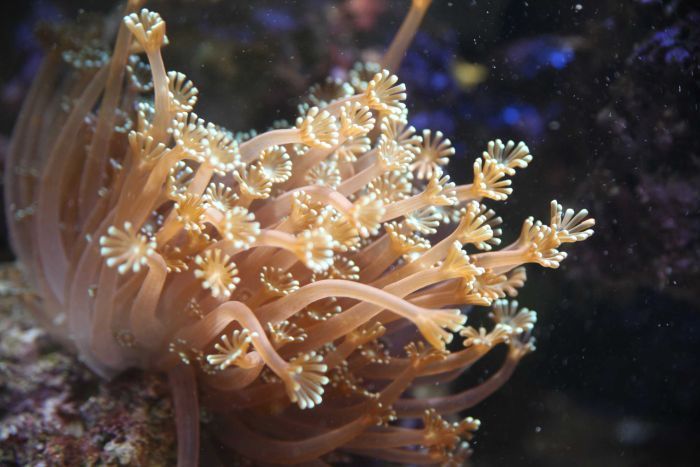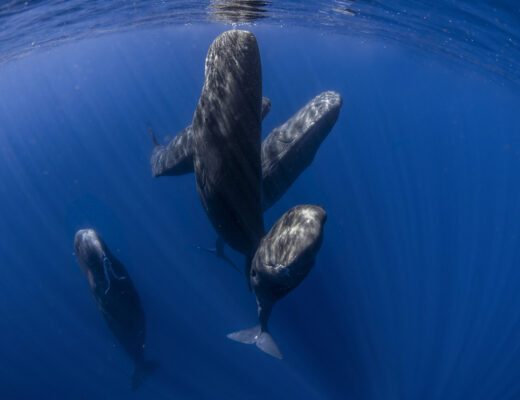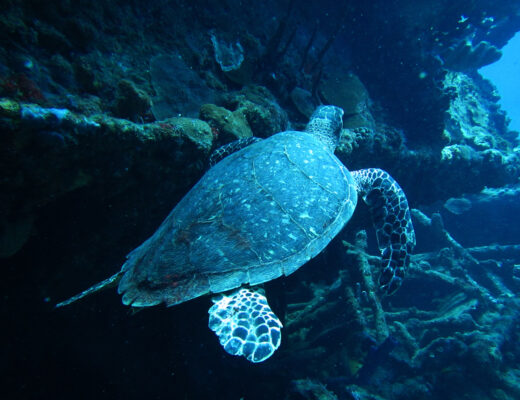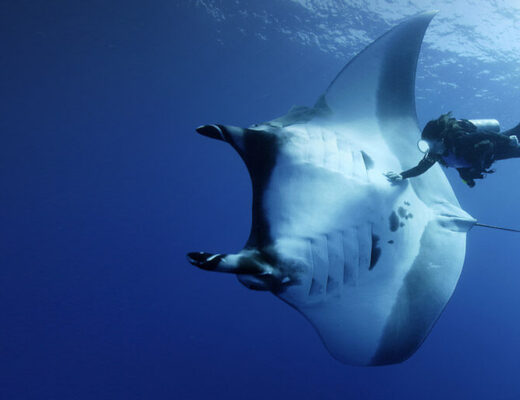A coral polyp is a spineless animal. Coral polyps can be the size of a pinhead while others are larger, sometimes a foot in diameter. One coral branch or mound is covered by thousands of these animals. They are invertebrates (spineless animals) and are cousins of anemones and jellyfish. When thousands of these animals are grouped together, they are referred to as coral colonies.
Each coral “tree” or “mound” is one colony of coral polyps. A polyp has a sac-like body and an opening or mouth encircled by stinging tentacles called cnidae. The polyp uses calcium carbonate from seawater to build itself a hard skeleton.
This limestone skeleton protects the soft, delicate body of the polyp. Coral polyps are usually nocturnal, meaning that they stay inside their skeletons during the day. At night, polyps extend their tentacles out to feed (see bottom photo).
Where do corals live?
Coral reefs are found in over 100 countries. Most reefs are located between the tropics of Cancer and Capricorn, in places such as the Pacific Ocean, the Indian Ocean, the Caribbean, the Red Sea and the Arabian Gulf. Corals are also found farther from the equator in places where warm currents flow out of the tropics, such as Florida and southern Japan. Recently, several cold water coral reefs have been discovered in Norway.
Worldwide, coral reefs cover an estimated 284,300 square kilometers (110,000 square miles).
Coral reefs grow best in waters with a temperature of between 21 and 29 degrees Celsius (70 and 85 degrees Fahrenheit). It is possible for soft corals to grow in hotter and colder places, but growth rates under these conditions are very slow.
Corals prefer clear and shallow waters, where lots of sunlight filters through to their symbiotic algae. It is possible to find corals at depths of up to 91 meters (300 feet), but reef-building corals grow poorly below 18-27 meters (60 to 90 feet). Corals also grow poorly near river openings or coastal areas with excessive run-off, because corals need salt water to survive.
How old are coral reefs?
The geological record indicates that the ancestors of modern coral reef ecosystems were formed at least 240 million years ago. The coral reefs existing today began growing as early as 50 million years ago. Most established coral reefs are between 5,000 and 10,000 years old. Although size sometimes indicates the age of a coral reef, this is not always true. Different species of coral grow at different rates, depending on water temperature, oxygen level, amount of turbulence, and availability of food.
How is a coral reef constructed?
Coral reefs are complex, multi-story structures with holes and crevices shared by various creatures. If a coral reef can be thought of as a metropolis of the sea, then a coral colony can be thought of as an apartment building with many different rooms and hallways that house different marine species.
Not all coral species build reefs. The actual architects of coral reefs are hard or stony corals, which are referred to as reef-building corals. As the polyps of stony corals grow, they produce limestone for their skeletons. When they die, their skeletons are left behind and are used as foundations for new polyps, which build new skeletons over the old ones. An actual coral mound or tree is composed of layer upon layer of skeletons covered by a thin layer of living polyps.
Other types of animals and plants also contribute to the structure of the reef. Many types of algae, seaweed, sponge, sediment and even mollusks like giant clams and oysters, add to the architecture of a coral reef. When these organisms die, they also serve as foundations for new corals.





No Comments